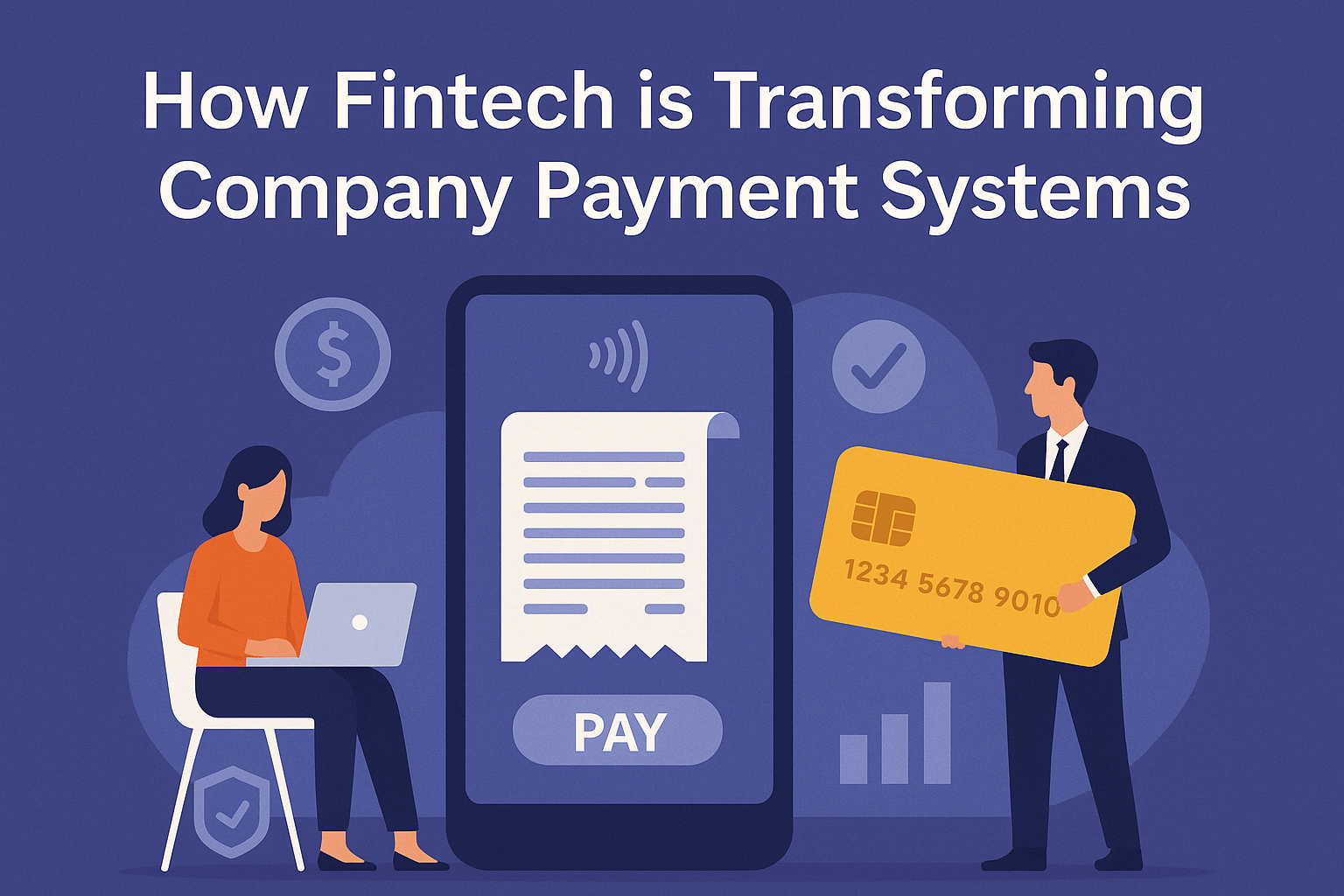
Introduction to Fintech in Payments
What is Fintech?
Fintech—or financial technology—isn’t just a buzzword. It’s a powerful wave of innovation that’s shaking up how money moves in our world. From peer-to-peer transfers to instant checkout buttons on your favorite shopping apps, fintech is making financial services faster, smarter, and way more convenient.
Why Payment Systems Needed a Change
Let’s face it—old-school payment systems were slow, clunky, and expensive. Long processing times, wire transfer fees, poor international support… it was like trying to run a Formula 1 car on gravel. Companies knew something had to give, and that’s where fintech stepped in.
The Role of Fintech in Payment Innovation
Fintech companies identified the bottlenecks and built digital solutions that fix them—seamlessly. Think of it as swapping out your fax machine for instant messaging. Whether it’s sending money across the globe in seconds or automating employee paychecks, fintech is the upgrade businesses didn’t know they needed—until now.
Traditional Payment Methods vs Fintech Solutions
Pain Points of Conventional Payment Methods
Remember writing checks? Or waiting 3-5 business days for a wire to clear? Traditional systems were notorious for:
- High fees
- Slow transaction speeds
- Limited access (especially globally)
- Poor tracking and visibility
These pain points ate into business profits and frustrated customers and vendors alike.
The Shift Towards Digital Transactions
Enter digital wallets, real-time banking, and mobile payments. Companies started shifting towards digital-first payment strategies—and guess what? Customers followed suit.
Case Studies of Payment Failures Before Fintech
Take Blockbuster’s failed attempt to adopt a subscription model—part of it came down to their clunky payment systems. Or the frustration customers experienced when e-commerce platforms failed to process payments smoothly. Fintech offered fixes that turned these failures into future-proof success stories.
Key Fintech Technologies Driving Payment Transformation
Mobile Payments and Digital Wallets
Tools like Apple Pay, Google Pay, and PayPal have made mobile payments mainstream. Businesses are embedding these wallets into their platforms, reducing checkout friction and boosting conversion rates.
Blockchain and Cryptocurrency in B2B Payments
Cross-border payments used to be a nightmare. Blockchain tech now lets businesses send crypto payments with minimal fees and near-instant settlement—perfect for freelancers, remote teams, or global suppliers.
Artificial Intelligence and Fraud Prevention
AI doesn’t just speed things up; it keeps things safe. Machine learning algorithms detect fraudulent behavior before it affects your bottom line.
Open Banking and APIs
Open banking allows third-party apps to connect directly with a company’s bank, making payment integrations smoother than ever. APIs let you plug into powerful financial networks without needing to reinvent the wheel.
How Companies Are Leveraging Fintech for Payments
Streamlining Payroll and Vendor Payments
Automated payroll systems like Gusto or Deel are powered by fintech to ensure global compliance, faster payments, and reduced administrative burden.
Enhancing Customer Checkout Experiences
Nobody wants to jump through hoops to pay. One-click checkouts and BNPL (Buy Now, Pay Later) services like Klarna make transactions smoother and more attractive to buyers.
Real-Time Payment Processing
Fintechs like Stripe and Square enable businesses to process payments in real time—boosting cash flow and reducing wait times for funds.
Global Payments and Currency Conversion
Wise (formerly TransferWise) and Revolut have become go-to platforms for businesses dealing with multiple currencies—offering low-cost, real-time FX services.
Benefits of Using Fintech in Business Payments
Speed and Efficiency
Fintech platforms eliminate red tape. What once took days now takes seconds. That’s a game-changer for any business managing high transaction volumes.
Cost Reduction
Lower transaction fees, reduced need for manual labor, and fewer errors mean businesses save big in the long run.
Enhanced Security
Advanced encryption, biometric authentication, and fraud detection make fintech payments more secure than many traditional methods.
Financial Transparency and Reporting
Detailed dashboards, real-time insights, and automated reconciliation make bookkeeping almost fun. (Well, almost.)
Industry Examples of Fintech Payment Integration
E-commerce Giants Using Fintech
Amazon’s integrated payments system and Shopify’s Shop Pay are great examples of how big players use fintech to provide smooth, fast, and reliable checkout processes.
SMEs Adopting Fintech Tools
Small businesses are jumping on the fintech train, too. Platforms like QuickBooks Payments or Square offer user-friendly options to accept card payments and track income.
Fintech in the Gig Economy
Freelancers on platforms like Upwork or Fiverr rely on fast, borderless fintech solutions like Payoneer to get paid without delay or high fees.
Challenges and Risks of Fintech Adoption
Regulatory Hurdles
Different countries have different financial regulations. Staying compliant while using global fintech tools can be tricky—but not impossible with the right advisors.
Cybersecurity Concerns
With digital convenience comes cyber risk. Companies need to invest in robust security practices to safeguard their operations and customer data.
Integration with Legacy Systems
Older infrastructure doesn’t always play well with shiny new fintech tools. Integration can be a headache without a well-planned tech stack.
The Future of Payments with Fintech
The Rise of Central Bank Digital Currencies (CBDCs)
Governments are getting into the game. CBDCs could soon offer businesses stable, secure digital alternatives to traditional currencies.
Biometric Payments and Voice Authentication
Forget passwords. Fintech is moving towards fingerprints, facial recognition, and even voice commands to authenticate transactions.
The Role of Machine Learning in Payment Automation
ML is making it possible to predict cash flow, recommend financial decisions, and automate repetitive financial tasks with shocking accuracy.
Conclusion
Fintech is no longer a niche—it’s a necessity. From small shops to multinational corporations, companies across the globe are using fintech to reinvent how they pay and get paid. By embracing the tech, businesses gain speed, security, and scalability that traditional systems simply can’t match.
The road ahead is paved with innovation, and the companies that ride the fintech wave now are the ones that will thrive in the digital economy of tomorrow.
FAQs
1. What is the biggest advantage of fintech in payments?
The speed and efficiency. Transactions happen in seconds, not days.
2. Are fintech payments safe for businesses?
Yes, when using reputable platforms with strong security measures like encryption and two-factor authentication.
3. How can small businesses benefit from fintech tools?
They can reduce costs, automate processes, and gain access to tools that were once only available to big companies.
4. What are the risks of relying on fintech for payments?
Cyber threats and regulatory challenges are key risks. Choosing secure, compliant providers is essential.
5. Will fintech replace traditional banks completely?
Not entirely. But fintech will continue to complement—and in some areas, outpace—traditional banking services.






